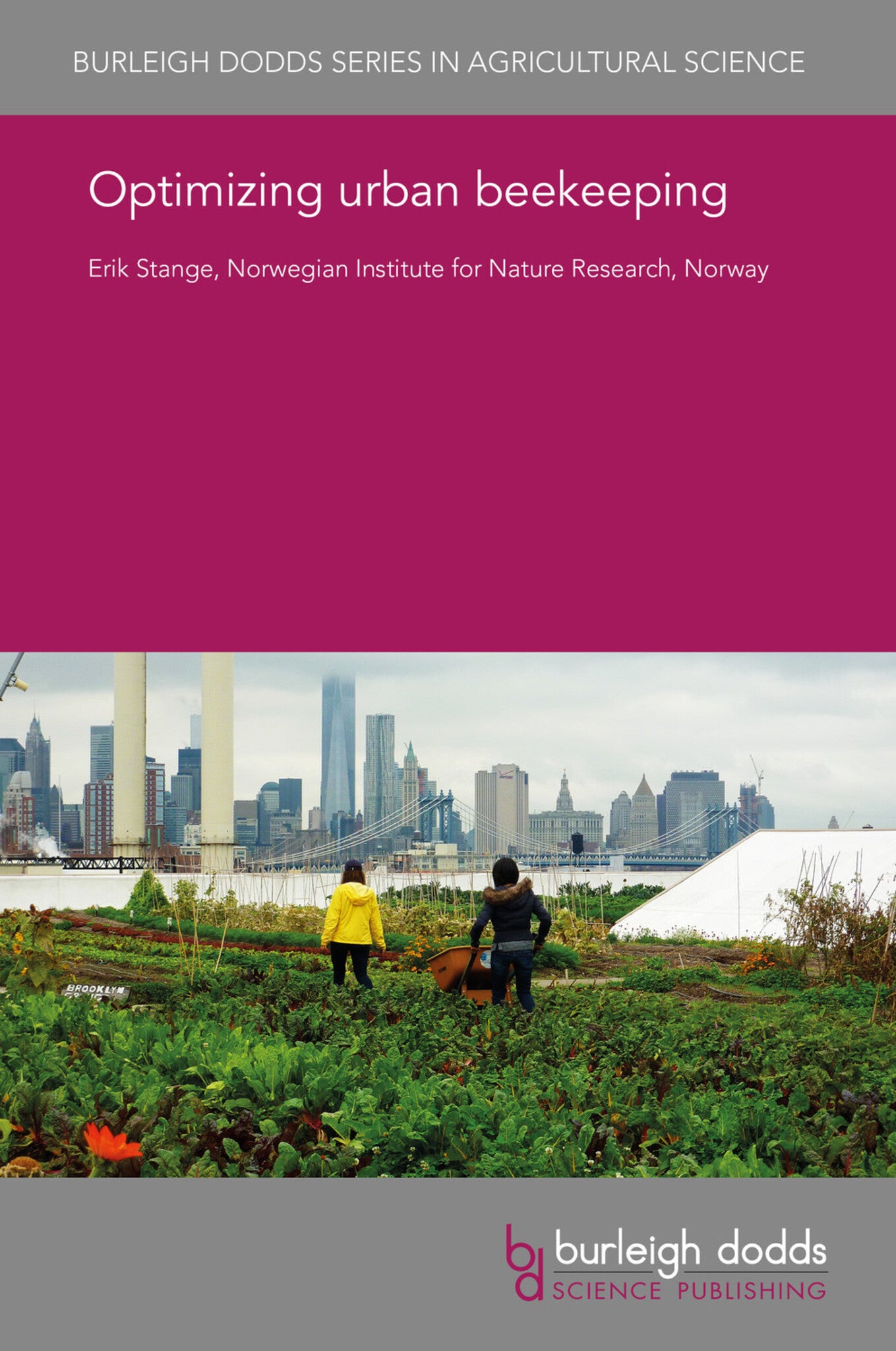We're sorry. An error has occurred
Please cancel or retry.
Optimizing urban beekeeping
Regular price
£25.00
Sale price
£25.00
Regular price
£25.00
Unit price
/
per
Sale
Sold out
Re-stocking soon
Beekeeping, or apiculture, is an agricultural pursuit that has witnessed a dramatic rise in popularity in the past decade in many urban areas across the world as individuals and groups react to the...
Read More

Some error occured while loading the Quick View. Please close the Quick View and try reloading the page.
Couldn't load pickup availability
- Format:
-
17 February 2020

Beekeeping, or apiculture, is an agricultural pursuit that has witnessed a dramatic rise in popularity in the past decade in many urban areas across the world as individuals and groups react to the widespread concern about the global decline populations of pollinating insects. This chapter provides a description of the urban environment for bees, and the specific challenges of pursuing beekeeping in cities—including honeybees’ pathogens and swarming behavior. It describes work that attempts to map urban foraging resources for bees, and how this information can be used to provide guidelines for sustainably managing urban honeybee densities. It also highlights recent investigations of how urban landscapes can be managed with respect to plant assemblages and mowing regimes to improve foraging options for both honeybees and wild pollinators alike.

Price: £25.00
Publisher: Burleigh Dodds Science Publishing
Imprint: Burleigh Dodds Science Publishing
Series: Burleigh Dodds Series in Agricultural Science
Publication Date:
17 February 2020
ISBN: 9781786766458
Format: eBook
BISACs:
TECHNOLOGY & ENGINEERING / Agriculture / Sustainable Agriculture, Urban farming / urban agriculture, TECHNOLOGY & ENGINEERING / Agriculture / Beekeeping, Sustainable agriculture, Apiculture (beekeeping)

1 Introduction 2 The urban environment for bees 3 Management challenges for urban beekeeping 4 Case study: mapping urban bee habitat in Oslo, Norway 5 Improving conditions for urban honeybees 6 Conclusion 7 Where to look for further information 8 References



